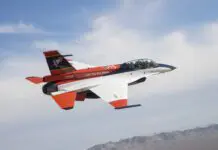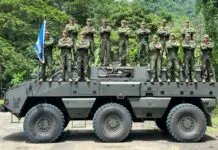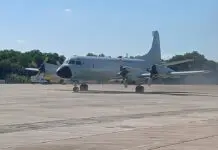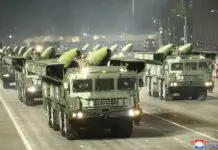As it is publicly known, the Super Étendard (SUE) fighter-bombers and their Modernisé variant (SEM), acquired by the Argentine Navy during the presidency of Mauricio Macri, continue to accumulate hours of rest rather than flight hours, as they are unable to achieve full operability. This inability is due to the lack of political and financial support to acquire a foreign supplier for the pyrotechnic cartridge sets of the SEM ejection system, which are originally manufactured by Safran Martin Baker but are inaccessible to Argentina due to a British veto (according to past authorities).
While it was believed that the U.S. company Task Aerospace Inc could be one of the definitive candidates to overhaul the systems, the lack of political decision and determination led the Naval Aviation Command to once again wait for a miracle to provide a solution to the Argentine Navy. It is noteworthy that the government invested even more in the recovery and return to service of old planes like the Fokker F-27, instead of using the same willpower to determine the fate of fighter planes with naval attack capabilities. It is needless to mention that it is easier to demonize an acquisition by an opposing political administration, rather than putting all political power into solving the root problem – regardless of personal opinions.

It is worth noting that the lack of political decision is not just a mere perception of the writer. Just recalling certain publications where we detailed statements from the Ministry of Defense putting an end to the saga as funds would not be allocated for the overhaul, but similar amounts would be used for other modernization projects. Due to the general refusal to the announcements, the former Minister of Defense, Jorge Taiana, further argued that “the Minister of Defense (of France) told me that they cannot be restored, for two reasons: because of the seats, which the British did not give up, and because of a series of parts of the Super Étendard Modernisé that are decommissioned“.

While it is true that it was not the best-planned purchase, there is also another issue to solve beyond the material resources and political/financial support: the pilots. The Argentine Navy is reportedly planning the preparatory training of Naval Aviation pilots for when the recently acquired but unpaid P-3C Orion aircraft from the Royal Norwegian Air Force eventually arrive, which will perform maritime patrol and surveillance tasks. Not only are naval pilots needed for the future P-3 Orions, but also for the future overhaul of the S-2T Turbo Tracker, which should provide support for operations in the Argentine Sea, although budgetary constraints continue to be an impediment for the latter.
So, what will happen with the SUE/SEM of the Argentine Navy? While we can focus on the issue of the supplier for the pyrotechnic cartridge sets of the ejection seats, or the lack of political will, every time we focus on solving one problem, a new one arises. Will pilots be trained to operate the Modernisé Super Étendard Weapon System? Will the necessary funds be allocated to finally complete the pyrotechnic material overhaul? Will the necessary signatures be obtained for this acquisition to transition from being an unnecessary expenditure to a solution to give flight to an institution that should never have left this capability on the ground? The decision now lies with the current Ministry of Defense as the clock keeps ticking.
You may also like: Argentine Air Force´s Hercules C-130H TC-66 transports firefighters to fight forest fires in the Chubut province










